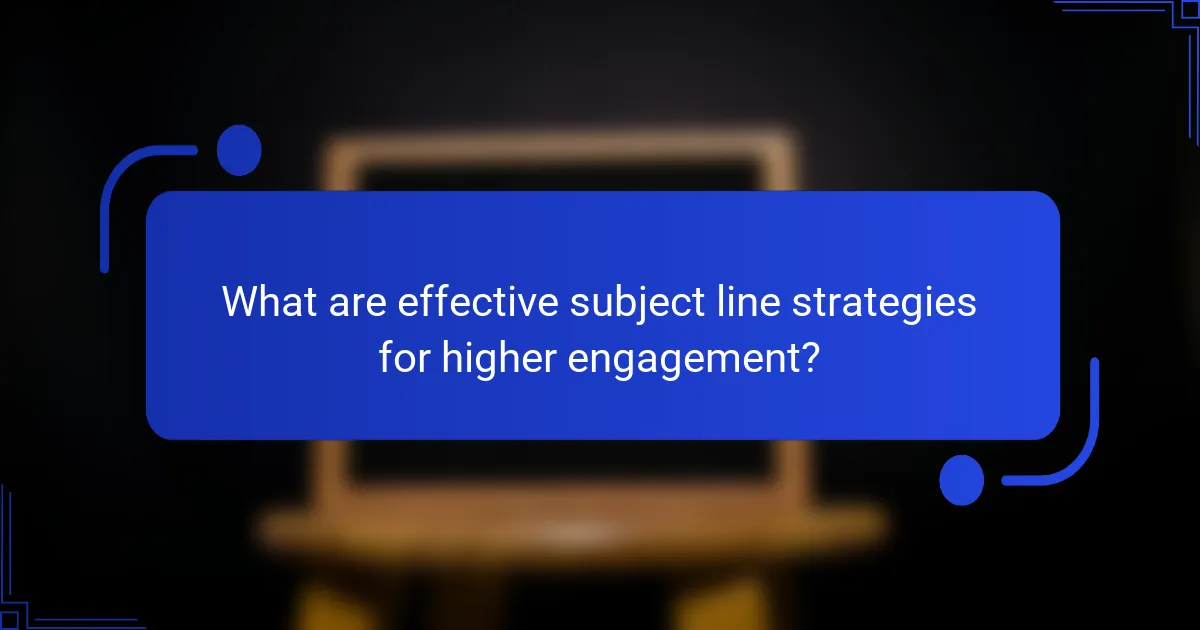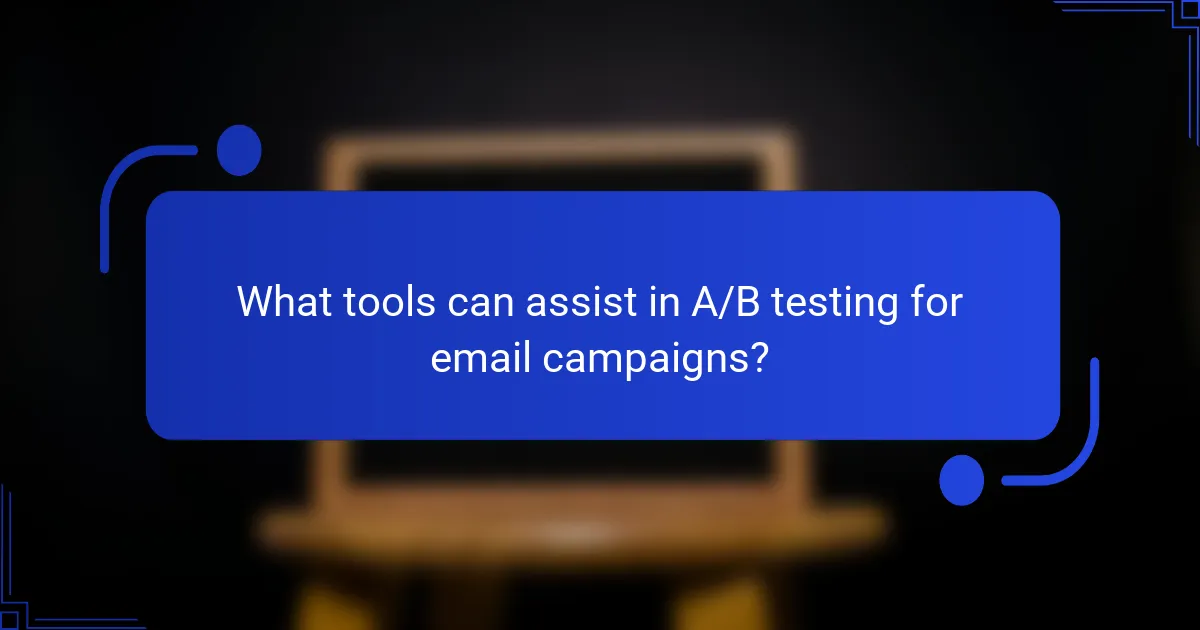Subject lines play a crucial role in email marketing, as they directly influence open rates and engagement levels. By employing A/B testing, marketers can compare different subject lines to identify which variations resonate most with their audience, ultimately optimizing their messaging for better results. Techniques such as personalization and urgency can further enhance the effectiveness of subject lines, driving higher engagement rates.

How can A/B testing improve email open rates?
A/B testing can significantly enhance email open rates by allowing marketers to compare different subject lines and identify which ones resonate more with their audience. By systematically testing variations, businesses can optimize their messaging to increase engagement and drive better results.
Increased engagement through subject line variations
Testing different subject lines helps determine which phrases or styles generate more interest among recipients. For example, using questions, personalization, or urgency can lead to higher open rates. Marketers should aim for a balance of creativity and clarity in their subject lines to capture attention effectively.
Consider running tests with variations such as “Exclusive Offer Just for You” versus “Limited Time Discount!” to see which approach yields better engagement. Tracking the performance of these variations can provide valuable insights into audience preferences.
Data-driven decisions for optimal performance
A/B testing provides concrete data that helps marketers make informed decisions about their email campaigns. By analyzing open rates, click-through rates, and conversion metrics, businesses can refine their strategies based on what works best. This approach minimizes guesswork and maximizes the effectiveness of email marketing efforts.
It’s essential to test one element at a time, such as the subject line, to isolate its impact. After gathering sufficient data, marketers can implement the winning subject line across larger campaigns, ensuring a higher likelihood of success. Regularly revisiting and testing new variations keeps the email content fresh and engaging for subscribers.

What are effective subject line strategies for higher engagement?
Effective subject line strategies for higher engagement focus on capturing attention and encouraging opens. Techniques such as personalization, urgency, and exclusivity can significantly enhance open rates and overall engagement with your emails.
Personalization techniques for subject lines
Personalization in subject lines involves tailoring the message to the recipient’s preferences, behaviors, or demographics. Including the recipient’s name or referencing past purchases can create a sense of connection and relevance.
For example, a subject line like “John, your favorite shoes are on sale!” directly addresses the recipient and highlights a specific interest. Aim for personalization to be genuine and relevant, as overly generic personalization can feel insincere.
Using urgency and exclusivity in messaging
Incorporating urgency and exclusivity in subject lines can motivate recipients to act quickly. Phrases like “Limited time offer” or “Exclusive access for our VIPs” create a sense of scarcity, prompting immediate engagement.
Consider using countdowns or deadlines in your messaging, such as “Sale ends in 24 hours!” This approach can significantly increase open rates, as recipients may fear missing out on valuable opportunities. However, ensure that the urgency is authentic to maintain trust with your audience.

What metrics should be tracked in A/B testing?
In A/B testing, key metrics to track include open rates and click-through rates, as these indicators provide insights into email performance and engagement. Monitoring these metrics helps determine which subject lines resonate best with your audience.
Open rates as primary performance indicator
Open rates measure the percentage of recipients who open an email, serving as a crucial performance indicator in A/B testing. A higher open rate suggests that the subject line effectively captures attention and encourages recipients to engage.
To improve open rates, consider using personalization, urgency, or curiosity in your subject lines. Generally, open rates can vary widely, but a range of 15% to 30% is common across many industries.
Click-through rates for engagement assessment
Click-through rates (CTR) indicate the percentage of recipients who click on links within the email, providing a direct measure of engagement. A/B testing different subject lines can help identify which ones lead to higher CTRs, reflecting the effectiveness of the email content and call-to-action.
To enhance CTR, ensure that your email content aligns with the expectations set by the subject line. Typical CTRs can range from 1% to 5%, depending on the industry and the quality of the email campaign.

How does audience segmentation affect subject line performance?
Audience segmentation significantly enhances subject line performance by allowing marketers to tailor messages to specific groups. By understanding the preferences and behaviors of different segments, businesses can create more engaging and relevant subject lines that drive higher open rates.
Targeting demographics for tailored messaging
Demographic targeting involves segmenting your audience based on characteristics such as age, gender, location, and income. For example, a clothing retailer might craft different subject lines for young adults versus older customers, using language and offers that resonate with each group. This approach can lead to improved engagement, as messages feel more personalized and relevant.
When creating demographic-based subject lines, consider using data from past campaigns to identify which segments respond best to specific messaging styles. A/B testing can help refine these approaches, ensuring that your subject lines align with the preferences of each demographic group.
Behavioral segmentation for improved relevance
Behavioral segmentation focuses on the actions and interactions of your audience, such as purchase history, browsing behavior, and email engagement. By analyzing these behaviors, you can create subject lines that reflect the interests and needs of different segments. For instance, a travel agency might send tailored offers to customers who have previously booked beach vacations, highlighting similar destinations.
To effectively implement behavioral segmentation, track user interactions over time and adjust your subject lines accordingly. Consider using triggers based on specific actions, such as cart abandonment or recent purchases, to send timely and relevant messages that encourage engagement and conversions.

What tools can assist in A/B testing for email campaigns?
Several tools can streamline A/B testing for email campaigns, enhancing engagement and optimizing open rates. Popular options include Mailchimp and HubSpot, which offer features tailored to testing different subject lines, content, and layouts.
Mailchimp for A/B testing features
Mailchimp provides robust A/B testing capabilities that allow users to test various elements of their email campaigns, including subject lines, send times, and content layouts. Users can easily set up tests by selecting the variables they want to compare and defining the audience segments for each variant.
One key feature is the ability to analyze performance metrics such as open rates and click-through rates in real-time. This helps marketers quickly identify which version resonates better with their audience, enabling data-driven decisions to enhance future campaigns.
HubSpot for analytics and reporting
HubSpot excels in providing comprehensive analytics and reporting tools that support A/B testing. Users can track detailed metrics, including engagement rates and conversion statistics, allowing for a deeper understanding of how different email elements perform.
Additionally, HubSpot offers user-friendly dashboards that visualize test results, making it easier to interpret data and adjust strategies accordingly. This insight can significantly improve the effectiveness of email campaigns over time, ensuring that marketers can refine their approaches based on solid evidence.

What are common pitfalls in A/B testing subject lines?
Common pitfalls in A/B testing subject lines include inadequate sample sizes and testing multiple variables simultaneously. These issues can lead to unreliable results, making it difficult to determine which subject line truly resonates with your audience.
Insufficient sample size affecting results
An insufficient sample size can skew your A/B test results, leading to misleading conclusions. Ideally, aim for a sample that represents a significant portion of your audience, typically in the low thousands, to ensure statistical validity.
When testing subject lines, a small sample may not capture the diversity of your audience’s preferences. This can result in a false sense of confidence in a winning subject line that may not perform well in a broader context.
To avoid this pitfall, calculate the required sample size based on your expected open rates and the desired confidence level. Tools and calculators are available online to assist with this process.
Testing too many variables at once
Testing multiple variables at once can complicate the analysis and obscure which factor influenced the results. For subject lines, focus on one variable at a time, such as wording or length, to isolate its impact on engagement.
For example, if you change both the subject line and the send time simultaneously, you cannot determine which change led to any observed difference in open rates. This can lead to confusion and ineffective strategies in future campaigns.
To streamline your testing, create a structured plan that outlines which variable you will test in each round. This approach allows for clearer insights and more actionable data for future email marketing efforts.

What emerging trends are shaping email subject lines?
Emerging trends in email subject lines focus on personalization and interactivity to boost engagement and open rates. As marketers adapt to changing consumer preferences, these trends highlight the importance of creating compelling and relevant subject lines that capture attention.
AI-driven personalization for enhanced engagement
AI-driven personalization tailors subject lines to individual recipients based on their behavior and preferences. This approach can significantly increase open rates by making emails feel more relevant to the reader’s interests.
To implement AI personalization, consider using data analytics to segment your audience and craft subject lines that resonate with each group. For instance, using a recipient’s name or referencing past purchases can create a more engaging experience.
However, avoid over-personalization, which may come off as intrusive. Striking a balance between personalization and privacy is crucial to maintaining trust with your audience.
Interactive elements in subject lines for higher interest
Incorporating interactive elements in subject lines, such as emojis or questions, can pique curiosity and encourage opens. These elements stand out in crowded inboxes, making your emails more noticeable.
For example, using a question like “Ready for your next adventure?” can engage readers and prompt them to open the email for more information. Similarly, emojis can convey emotions or themes quickly, enhancing the subject line’s appeal.
Be cautious with the use of interactive elements; excessive or irrelevant emojis may dilute your message. Aim for a few well-placed elements that complement the subject line rather than overwhelm it.